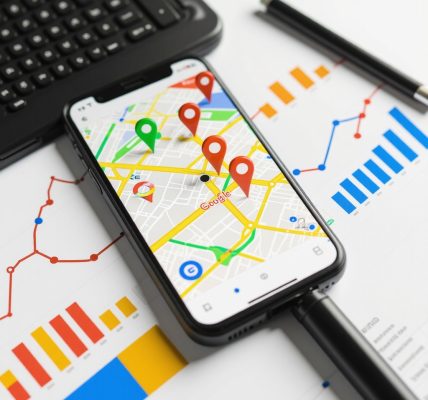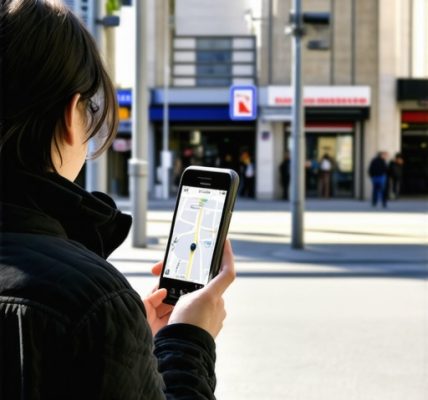Introduction to Google Maps SEO Strategies
In the digital age, having a strong presence on platforms like Google Maps is crucial for local businesses. With the increasing number of customers turning to online searches for local services, optimizing your Google Maps listing can significantly enhance your visibility and attract more customers. Understanding how to boost your Google Maps SEO is not just about being found; it’s about being chosen over your competitors.
Why Google Maps Optimization Matters for Local Businesses
Google Maps SEO plays a pivotal role in local search engine optimization. When potential customers search for services nearby, Google prioritizes businesses that are well-optimized in their listings. This includes key elements such as your business information, location accuracy, and customer reviews. By focusing on these areas, you can improve your chances of appearing in the coveted Google Local 3-Pack, the top three listings that appear for local searches.
To effectively optimize your Google Business profile, you should start by ensuring that all your business information is complete and accurate. This includes your business name, address, phone number, and website. Consistency across all platforms is crucial, as discrepancies can confuse potential customers and hurt your rankings.
Key Techniques to Enhance Your Google Maps SEO
Several powerful techniques can significantly improve your Google Maps visibility:
1. Leverage Local Citations
Building local citations is essential for establishing your business’s credibility in the local area. Ensure that your business is listed on reputable local directories and that your NAP (Name, Address, Phone number) information is consistent across all platforms. This not only helps Google verify your business’s legitimacy but also boosts your chances of ranking higher in local searches. For an in-depth look at citation management, explore our guide on mastering GMB citation management.
2. Optimize for Keywords
Using the right keywords is critical for local SEO. Research relevant keywords that potential customers might use to find your services. Incorporate these keywords naturally into your business description and posts. This can help Google better understand what your business offers, further improving your chances of ranking well. For insights on keyword strategies, check out our post on effective GMB keyword strategies for 2025.
3. Encourage Customer Reviews
Customer reviews are a vital component of Google Maps SEO. Not only do they build trust with potential customers, but they also influence your ranking on Google. Encourage satisfied customers to leave positive reviews and be sure to respond to all reviews, both positive and negative. This engagement signals to Google that you are an active and trustworthy business. For best practices on managing reviews, refer to our post on GMB review generation tips.
By implementing these strategies, you can enhance your Google Maps SEO effectively. Each technique contributes to improving your visibility, attracting more local customers, and ultimately driving more traffic to your business. As you continue to refine your approach, consider further exploring comprehensive local SEO optimization techniques to stay ahead of the competition.
Utilizing Google My Business Posts for Engagement
One effective way to engage with your audience and improve your Google Maps SEO is by utilizing Google My Business posts. These posts allow you to share updates, promotions, and events directly on your business profile, which can encourage customer interaction. Regularly posting fresh content not only keeps your audience informed but also signals to Google that your business is active and relevant. For more details, learn how to use GMB posts for maximum engagement.
1. Share Valuable Content
Your posts should provide value to your audience. Consider sharing tips related to your industry, customer testimonials, or behind-the-scenes glimpses of your business. This not only enhances your credibility but also fosters trust with potential customers. Engaging content can lead to more interactions, which in turn can improve your ranking on Google Maps.
2. Incorporate Calls to Action
Including clear calls to action (CTAs) in your posts can guide customers towards the next steps, whether it’s visiting your website, calling your business, or visiting your location. Effective CTAs encourage engagement and can lead to higher conversion rates. For more on crafting compelling CTAs, check out our guide on creating effective GMB business descriptions.
Enhancing Your Google Maps Presence with High-Quality Images
Images play a crucial role in attracting customers on Google Maps. High-quality visuals can make your listing more appealing and showcase your products or services effectively. Ensure that your images are well-lit, relevant, and represent your business accurately.
1. Optimize Images for Better SEO
When uploading images, don’t forget to optimize them by using descriptive file names and alt text. This not only helps Google understand what the images depict but also improves your visibility in image searches. To dive deeper into photo optimization strategies, refer to our post on essential guide to GMB photo optimization.
2. Regular Updates with Fresh Content
Regularly updating your images keeps your profile fresh and engaging. Consider adding new photos of your products, services, or team members to showcase your business’s personality and create a connection with potential customers.
Understanding the Importance of NAP Consistency
Another critical factor in boosting your Google Maps SEO is ensuring NAP (Name, Address, Phone number) consistency across all online platforms. Discrepancies can lead to confusion for both customers and search engines, negatively impacting your rankings.
1. Audit Your Listings
Conduct a thorough audit of your online listings to ensure that your NAP information is consistent everywhere. This includes your website, social media profiles, and other business directories. For a comprehensive approach to auditing your listings, check out our article on GMB SEO audit.
2. Leverage Local Directories
Ensuring that your business is listed in reputable local directories can bolster your online presence. These listings often carry weight in local SEO, enhancing your credibility and visibility in search results. Explore more about this in our guide on comprehensive local SEO optimization techniques.
By embracing these strategies, you can significantly enhance your Google Maps SEO, drive more traffic to your business, and ultimately convert local searches into loyal customers. Each aspect discussed here is interlinked, creating a robust framework to improve your listing’s performance. As you continue to refine your approach, consider exploring additional tactics to stay ahead of the competition.
Enhancing Customer Engagement through Google My Business
Engagement is key to boosting your visibility on Google Maps. Utilizing features like Google My Business (GMB) can significantly enhance customer interaction with your listing. Regular updates, including promotions and events, can keep your audience engaged and encourage them to take action. For more insights, explore our guide on using GMB posts for maximum engagement.
1. Utilizing Posts for Promotions and Updates
Sharing timely updates about your offerings not only informs potential customers but also signals to Google that your business is active. These posts can highlight special discounts, new product launches, or upcoming events. By actively managing your posts, you can create a dynamic presence on Google Maps that resonates with your audience.
2. Responding to Questions and Feedback
Encouraging customers to ask questions directly on your GMB profile can foster interaction and build trust. By responding promptly to these inquiries, you show that you value customer engagement. This interaction can also positively influence your local SEO, as Google tends to favor businesses that actively engage with their customers. For strategies on effectively managing customer feedback, check our article on GMB review generation tips.
Maximizing Your Google Maps Visibility with Local Keywords
Incorporating local keywords into your business description and posts is essential for improving your ranking on Google Maps. This involves using phrases that potential customers are likely to search for when looking for services in your area. Tools like Google Keyword Planner can help you identify effective local keywords to target.
1. Integrating Long-Tail Keywords
Long-tail keywords, which are more specific phrases typically containing three or more words, can be particularly effective in attracting highly-targeted traffic. For instance, instead of just “pizza,” use “best pizza delivery in [your city].” This strategy not only helps you connect with your audience more effectively but also increases your chances of ranking higher in local searches.
2. Creating Geo-Targeted Content
Creating content that speaks directly to your local audience can also significantly aid your Google Maps SEO. Consider writing blog posts or articles that discuss local events, highlight community involvement, or address local issues related to your industry. This not only positions you as a local authority but also attracts more local traffic. For additional strategies, take a look at our post on uncovering GMB SEO secrets.
Ensuring Positive Customer Experiences for Better Rankings
Customer experience plays a crucial role in your Google Maps ranking. Ensuring that customers have a positive experience with your business can lead to better reviews, which are a significant factor in local SEO. Focus on providing exceptional service, and encourage happy customers to leave reviews.
1. Monitoring Your Online Reputation
Regularly monitoring your online reputation is vital. Tools like Google Alerts can help you stay updated on what is being said about your business online. By addressing any negative feedback promptly, you can mitigate potential damage to your reputation and improve customer trust.
2. Leveraging Social Proof
Positive reviews act as social proof that can influence potential customers’ decisions. Encourage satisfied customers to share their experiences not only on Google but also on your social media platforms. This cross-platform engagement can significantly enhance your online presence and attract new customers. For more on this, refer to our insights on best practices for GMB review generation.
Leveraging Google My Business Insights for Strategic Improvements
Understanding the performance of your Google Maps listing is essential for continuous improvement. Google My Business provides valuable insights that can help you gauge how customers find your business and interact with your listing. Utilize these insights to refine your strategies and ensure you’re meeting customer needs effectively.
1. Analyze Customer Behavior
Google My Business insights offer data on how customers are engaging with your listing, including how they found you (via search or maps) and what actions they took, such as visiting your website or requesting directions. By analyzing this data, you can adjust your business descriptions and posts to better align with customer interests, thereby enhancing your Google Maps SEO.
2. Track Customer Engagement Trends
Monitoring trends in customer engagement can also inform your marketing strategies. For instance, if you notice a spike in requests for directions after posting about a special offer, this indicates that your promotions are resonating with potential customers. Consider optimizing your posts based on what has previously driven engagement. For deeper insights on tracking performance, explore our guide on how to track GMB performance for optimal results.
Creating a Compelling Business Description for Better SEO
Your Google My Business description is a crucial element for SEO, as it provides an opportunity to incorporate relevant keywords and inform potential customers about your offerings. Crafting an engaging and informative business description can set you apart from competitors.
1. Highlight Unique Selling Points
In your business description, emphasize what makes your products or services unique. Whether it’s exceptional customer service, exclusive products, or special promotions, clearly stating these points can attract more local customers. Remember to use natural language that reflects your brand’s voice, making it relatable and inviting.
2. Include Local Keywords
Integrating local keywords into your business description is essential. Use phrases that your target audience is likely to search for, ensuring they flow naturally within the text. This tactic not only aids in ranking higher on Google Maps but also helps potential customers understand your offerings quickly. For practical tips on keyword integration, check out our post on how to optimize Google Business SEO for higher rankings.
The Role of Social Media in Enhancing Google Maps Visibility
Social media platforms can significantly influence your Google Maps SEO. Engaging with customers on social media not only boosts your visibility but also drives traffic to your Google Maps listing.
1. Share Your Google Maps Listing
Promote your Google Maps listing on your social media channels. Encourage followers to leave reviews and check in when they visit your business. This not only enhances your credibility but also signals to Google that your business is active and engaged with customers.
2. Leverage User-Generated Content
Encouraging customers to share their experiences on social media can create valuable user-generated content. This type of engagement not only strengthens your community but also improves your visibility on Google Maps. Promote hashtags related to your business to track and share customer posts effectively.
By implementing these effective strategies, you can enhance your Google Maps SEO, ensuring that your local business stands out in search results. From optimizing your Google My Business profile to leveraging social media engagement, each tactic plays a crucial role in attracting more customers and driving growth. For a comprehensive approach to local SEO, consider exploring our content on comprehensive local SEO optimization techniques.
Frequently Asked Questions About Google Maps SEO
1. What is Google Maps SEO and why is it important?
Google Maps SEO refers to the techniques and strategies used to optimize your business listing on Google Maps. It is essential for local businesses as it increases visibility, enhances local search ranking, and drives more foot traffic to your physical location.
2. How can I improve my Google Maps ranking?
To improve your Google Maps ranking, ensure your Google My Business profile is fully optimized with accurate NAP (Name, Address, Phone number) information, utilize relevant keywords, encourage customer reviews, and regularly update your posts and images.
3. What role do customer reviews play in Google Maps SEO?
Customer reviews significantly impact your Google Maps SEO. They not only build trust with potential customers but also influence your ranking. Businesses with more positive reviews tend to perform better in local search results.
4. How often should I update my Google My Business profile?
You should update your Google My Business profile regularly. This includes posting updates about promotions, events, and new products or services, as well as uploading fresh images to keep your listing engaging and relevant.
5. What are local citations and why are they important?
Local citations are mentions of your business’s name, address, and phone number on various websites and directories. They are important because they help establish your business’s credibility and improve local search rankings.
6. Can social media impact my Google Maps SEO?
Yes, social media can positively impact your Google Maps SEO. Engaging with customers on social media, sharing your Google Maps listing, and encouraging reviews can enhance your online presence and drive traffic to your business.
7. How do I choose the right keywords for my Google Maps listing?
Choosing the right keywords involves researching terms relevant to your business and location. Tools like Google Keyword Planner can help identify effective local keywords that potential customers are searching for.
8. What is the Google Local 3-Pack, and how can I get featured?
The Google Local 3-Pack is the top three local business listings that appear in response to local searches. To get featured, optimize your Google My Business profile, gather positive reviews, and ensure accurate NAP consistency.
9. How can I track the performance of my Google Maps listing?
You can track the performance of your Google Maps listing using Google My Business Insights, which provides data on how customers find your listing and their engagement behavior. This helps you refine your strategies based on real customer interactions.
10. What are some common mistakes to avoid in Google Maps SEO?
Common mistakes include inconsistent NAP information, neglecting customer reviews, failing to update your profile regularly, and not utilizing keywords effectively. Avoiding these pitfalls can enhance your Google Maps SEO efforts.
Authority Resources for Google Maps SEO
When optimizing your Google Maps listing, it’s essential to rely on trusted resources and expert insights. Here are some authoritative websites and literature that can provide further guidance:
- Moz – Local SEO: A comprehensive guide to local SEO, including Google Maps optimization strategies.
- Search Engine Land – What is Local SEO?: An overview of local SEO practices and their importance.
- Neil Patel – What is Local SEO?: Insights and tips for optimizing local search presence.
- BrightLocal – Local SEO Learning Hub: A resource center for local SEO best practices and updates.
- Search Engine Journal – Local SEO Articles: Articles and guides focusing on local SEO trends and strategies.
Conclusion
In conclusion, mastering Google Maps SEO is vital for local businesses aiming to enhance their online presence and attract more customers. By following the comprehensive strategies outlined in this article—from optimizing your Google My Business listing to leveraging social media and engaging with customer reviews—you can significantly improve your visibility on Google Maps. Remember, the goal is not just to be found, but to be chosen, and by applying these tactics, you can position your business as a top choice in your local market.



I appreciated the practical breakdown here — especially the emphasis on NAP consistency and using GMB posts to show activity. A small tip from my experience running a neighborhood bakery: we set a simple weekly cadence (one post + two new photos) and made a checklist to audit citations across top local directories every quarter. Within two months we moved into the Local 3‑Pack for several “best [product] in [city]” queries, mostly after a surge of recent photos and a handful of timely responses to reviews.
One challenge I still wrestle with is jumpstarting those first few reviews without sounding pushy. We try to ask customers at the point of sale (with a short QR code) and offer a small handwritten thank‑you that gently suggests leaving feedback. Has anyone found effective, low-friction ways to encourage honest reviews or tools that make quarterly NAP audits painless? Would love to hear other tactics for balancing regular GMB posts with day‑to‑day operations.